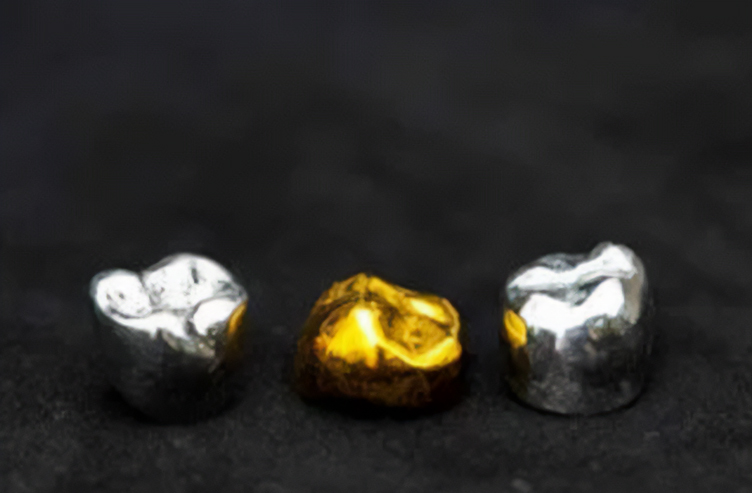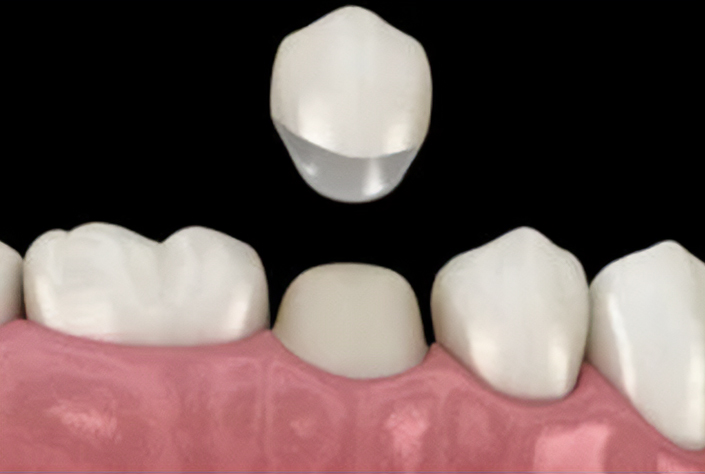Crowns and Bridges Smile Gallery
Start from 130£ – Timescale 7 Days
Turkish Crowns and Bridges
The Pearl Clinic Antalya Turkey Professional Dental Services
 TURKISH CROWNS: WHAT ARE THEY?
TURKISH CROWNS: WHAT ARE THEY?
Turkish Crowns, also known as dental crowns, are caps placed on teeth or dental implants. Their primary purpose is dental rehabilitation performed by our dentists. Crowns serve as a dental treatment used for both aesthetic and functional purposes.
Various Types of Dental Crowns Exist
Dental crowns play a crucial role not only in aesthetic improvement processes but also in maximizing dental functionality during the chewing process for the patient. Patients with any functional issues in their teeth can benefit from this solution, which is perfect for enhancing smiles and building confidence
(with an affordable crown price).
Placement Technique
To successfully carry out the process, the involvement of highly trained professionals is essential. Patients will notice that their natural teeth have been 'hollowed' and 'reduced,' and these artificial crowns, mimicking their front teeth, will be placed over them.
Different Crown Types
At The Pearl Clinic, we offer various price options tailored to the needs and preferences of our patients. Our expert team in dental crowns collaborates with renowned aesthetic prosthesis specialists and distinguished prosthesis laboratories to ensure our patients achieve the highest quality in aesthetic restorations. Whether it's crowns, porcelain veneers, or ceramic fillings, we focus on perfectly restoring our patients' smiles with the diverse types of dental crowns we provide.
The Importance of Aesthetic Improvement
Attention should be given to dental crowns. By restoring a damaged tooth (for example, due to decay or gum inflammation) to its original state, not only does the patient gain maximum confidence in chewing processes but also ensures aesthetic improvement. Over the years, due to wear, dental crowns are more commonly used to replace these teeth than incisors. Similarly, the importance of crowns to mimic normalcy and naturalness in extensively damaged pieces is crucial and can lead to a deterioration in oral health when exposed. This issue is addressed by replacing or substituting the compromised natural tooth with an artificial one, personalized in terms of enamel tone and morphology (according to the patient's oral cavity).
One of the significant drawbacks of dental crowns is that they require the removal of healthy tooth structure. Compared to other options, it becomes a more invasive treatment, as molars and small molars are the most exposed parts to wear over the years. Dental crowns are more frequently made to replace these teeth than incisors. Similarly, the importance of crowns to mimic normalcy and naturalness in highly damaged pieces is crucial. When exposed, it can lead to a deterioration in oral health. The solution to this issue involves replacing or substituting the natural tooth with an artificial tooth, personalized to fit the patient's oral cavity in terms of enamel tone and morphology. This allows for personalized restoration in deteriorating conditions.
TYPES OF DENTAL CROWNS
There are various types of crowns made from different materials such as E-max ceramic (porcelain), zirconium, metal, and resin. It should be noted that all these materials provide highly satisfying results in patients due to their adaptation levels. However, when superior aesthetics are required, and there is a good quality/price ratio in dental reconstructions, porcelain crowns are most commonly used.
E-max Porcelain Crowns
E-max porcelain crowns provide better natural color matching compared to other types of crowns. They are more fragile than those made from porcelain or zirconium metal. Therefore, they are usually not placed on back teeth or molars but are used in aesthetic dental restorations for front teeth. Porcelain crowns are used only for aesthetic restorations when not indicated.
Zirconium Crowns
Zirconium is a strong material that can withstand daily wear and tear. It has good aesthetic properties, displaying translucency and light reflection similar to natural teeth. Additionally, these crowns differ by being considered "biocompatible" compared to amalgam or metal alloys. Zirconium eliminates concerns about allergies or negative reactions as it is accepted by the human body. Aesthetically, porcelain crowns are generally considered a step above zirconium crowns.


Porcelain Fused to Metal Crowns
Porcelain fused to metal dental crowns are made from metal with a porcelain coating. They appear natural and are more durable than pure porcelain crowns. The primary disadvantage is the potential for the metal to become visible along the gum line or when gums recede over time. Due to their lower cost compared to zirconium and e-max porcelain, these crowns can be a good option for back teeth.
Metal Crowns
With the advancement of aesthetic dentistry, this type of crown is now less commonly used. They were typically made from gold, palladium, silver, nickel, or chrome. While they often lasted a long time, their color did not look natural, especially for front teeth.


Crowns and Gum Recession: What Are They?
After the fixation of dental crowns, the gums may undergo a recession over time. As a result, the part of the neck that attaches to the natural tooth root becomes visible. If the neck is made of metal, it can adversely affect the aesthetics and become noticeable. This outcome depends on the materials used by the prosthetic specialist to produce the crown, with porcelain standing out due to its detailed laboratory selection ensuring maximum stability and durability.
Which Is Better for Me: Crown or Veneer?
Confusing the terms "crown" and "veneer" is common, but it's essential to note that these terms don't precisely refer to the same thing. This ensures maximum aesthetic and functional results. At The Pearl Clinic, we collaborate with top-notch prosthetic laboratories to guarantee high-quality aesthetic outcomes with different types and price ranges of dental crowns.
The Pearl Clinic Antalya Turkey Professional Dental Services
WHAT IS A FIXED DENTAL BRIDGE?
A fixed dental bridge is a type of dental prosthesis that rests on the healthy teeth remaining in the patient's mouth, typically replacing adjacent missing teeth. Also known as fixed partial dentures, they are considered an optimal solution, along with dental implants, for individuals who have lost one or more natural teeth.
Steps Prior to Placement of a Fixed Prosthesis
Before placing a fixed dental bridge, the dentist initiates the process by taking X-rays and creating an impression of the patient's mouth. This impression results in a plaster cast that serves as a basis for crafting the bridge. Subsequently, the dentist carves the natural teeth around the gap caused by the missing teeth, creating space and an improved gripping surface. In some cases, endodontic procedures may be necessary to devitalize certain teeth, referred to as "pillars," which support the bridge.
How is a Fixed Dental Bridge Placed?
Following the teeth carving, provisional prostheses in resin or acrylic are placed to maintain aesthetics and functionality until the final fixed dental bridge is crafted. Dental bridges are produced in laboratories, and the process takes a few days before the bridge is ready for placement. Shape and color adjustments may require additional clinic visits, ensuring an optimal result.
Functions of Fixed Dental Bridges
Beyond restoring masticatory function and enhancing the aesthetics of the smile, fixed dental bridges prevent various oral health risks. Missing teeth can cause adjacent teeth to shift over time, leading to bite problems, bruxism, and an increased risk of cavities and periodontal disease. Fixed dental bridges also contribute to improving appearance, reducing the characteristic "witch face" associated with a loss of vertical dimension.
Advantages and Disadvantages of Fixed Dental Bridges
Fixed dental bridges are a more affordable alternative to dental implants, making them accessible for individuals with budget constraints. They offer durability, strength, and easier maintenance compared to removable dentures. However, a significant drawback is the necessity to carve healthy teeth, making it a more invasive treatment. Despite this, many patients find the results well worth the investment.
Should I Get a Fixed Dental Bridge?
Given the diverse oral needs of each patient, it is crucial to consult with an expert dental technician to assess if a fixed dental bridge is suitable for your case.
You can make an appointment at our dental clinic so that our experts in dental prosthetics can carry out a free diagnosis and can guide you in which treatment is best for you
Looking for a reliable and satisfied treatment?
Contact Us & Learn More About Our Treatments








LP Doğrulanmış
LP Doğrulanmış
James Sessions Doğrulanmış
James Sessions Doğrulanmış
Eveline Özgür DoÄŸrulanmış
Eveline Özgür DoÄŸrulanmış
John O'Sullivan Doğrulanmış
John O'Sullivan Doğrulanmış
Rebecca Rowell Doğrulanmış
Rebecca Rowell Doğrulanmış
Andrea Elliott Doğrulanmış
Andrea Elliott Doğrulanmış
Muhammed Ali Doğrulanmış
Muhammed Ali Doğrulanmış
Stanislav Morozov Doğrulanmış
Stanislav Morozov Doğrulanmış
Anthony Galvin Doğrulanmış
Anthony Galvin Doğrulanmış
Michael Berridge Doğrulanmış
Michael Berridge Doğrulanmış
Yusuf Mahomed Doğrulanmış
Yusuf Mahomed Doğrulanmış
Jennifer Barrett Doğrulanmış
Jennifer Barrett Doğrulanmış
Alan Bothamley Doğrulanmış
Alan Bothamley Doğrulanmış
Ben Smith Doğrulanmış
Ben Smith Doğrulanmış
Aureole Tossou Doğrulanmış
Aureole Tossou Doğrulanmış
Tami Cohen Doğrulanmış
Tami Cohen Doğrulanmış
Kate Yarwood Doğrulanmış
Kate Yarwood Doğrulanmış
Sharon Norris Doğrulanmış
Sharon Norris Doğrulanmış